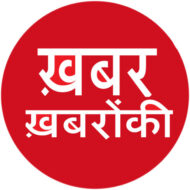
Ira Singh
Khabar Khabaron Ki, 03 March’24
The official data stated India’s economic growth in the October- December (Q3FY24) quarter. India’s economy demonstrated remarkable resilience in the third quarter, with GDP expanding by a robust 8.4%, exceeding earlier projections. However, the consensus among economists is that this was primarily on the back of strong net tax collections and controlling of expenditure on subsidies by the government, something which could dissipate in the coming quarters.
GDP (Gross Domestic Product), traditionally regarded as the primary measure of a country’s economic performance, calculates the total value of goods and services produced within its borders. However, critics argue that GDP fails to account for the value generated by intermediate goods and services, leading to potential distortions in economic analysis.
Conversely, GVA(Gross Value Added) offers a more refined perspective by focusing solely on the value generated at each production stage, excluding intermediate consumption. This approach provides a clearer picture of the value added by each sector to the economy, facilitating more accurate assessments of productivity and growth.
Leading economists have been vocal supporters of GVA, citing its ability to provide insights into the underlying dynamics of economic activity.
Experts believe that gross value added (GVA), which grew at 6.5 per cent in the quarter, is a much better indicator of the economy’s growth.
The better-than-expected GDP growth was primarily driven by strong growth in net taxes and gross fixed capital formation. The strong government spending in capex in the earlier quarters is probably crowding in private investments,” according to Rumki Majumdar, Economist at Deloitte India.“At the same time, the divergence between GDP and GVA reflects the expenditure side of the economy (GDP) is likely growing stronger than the production side (GVA). This divergence could point to demand and supply side mismatch and may affect how inflation may move in the upcoming quarters,” Majumdar said.
India’s impressive GDP growth in the third quarter underscores the country’s resilience in the face of adversity. However, lingering concerns about the sustainability of this growth trajectory highlight the need for prudent economic management and a holistic approach to policymaking in the post-pandemic era.
